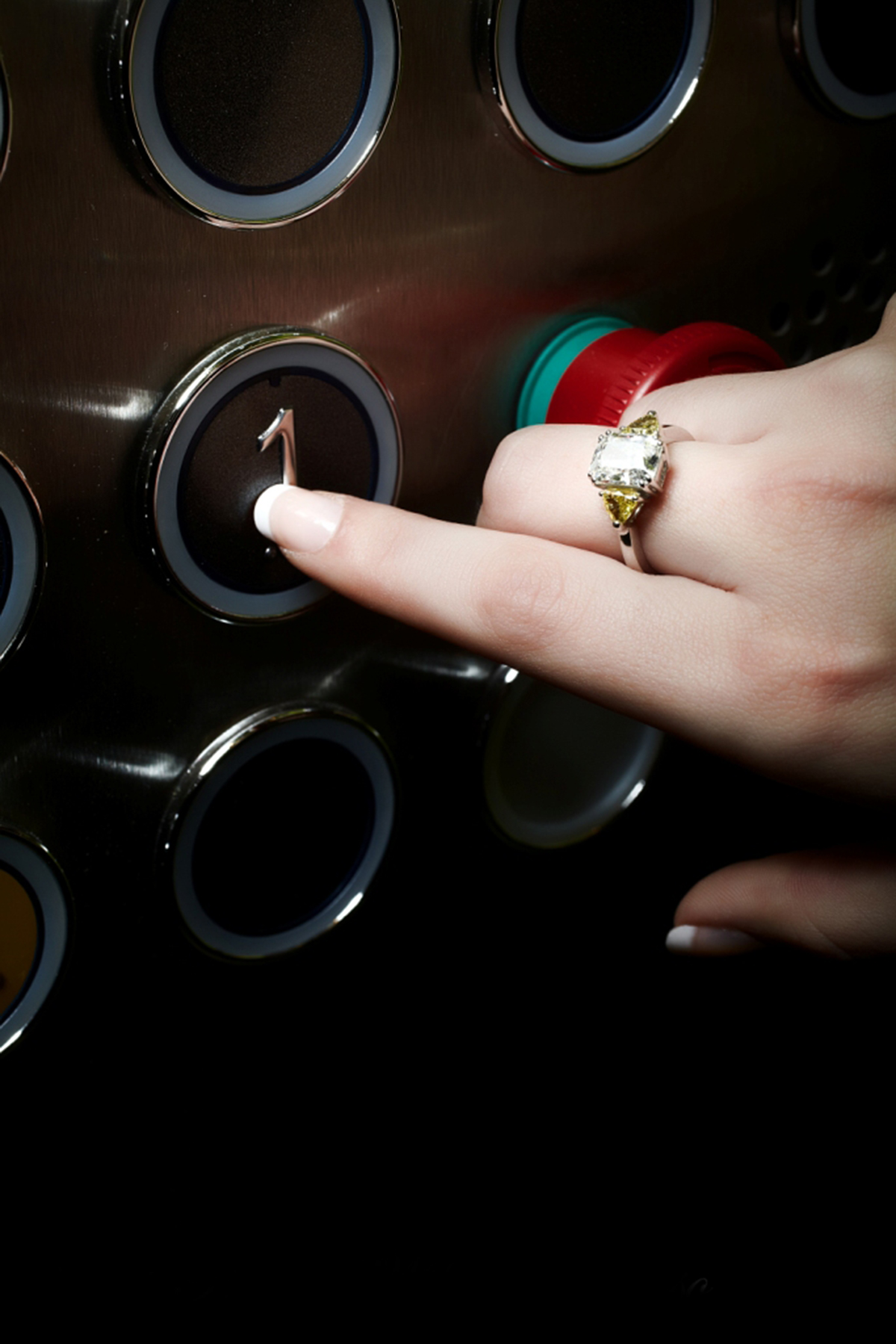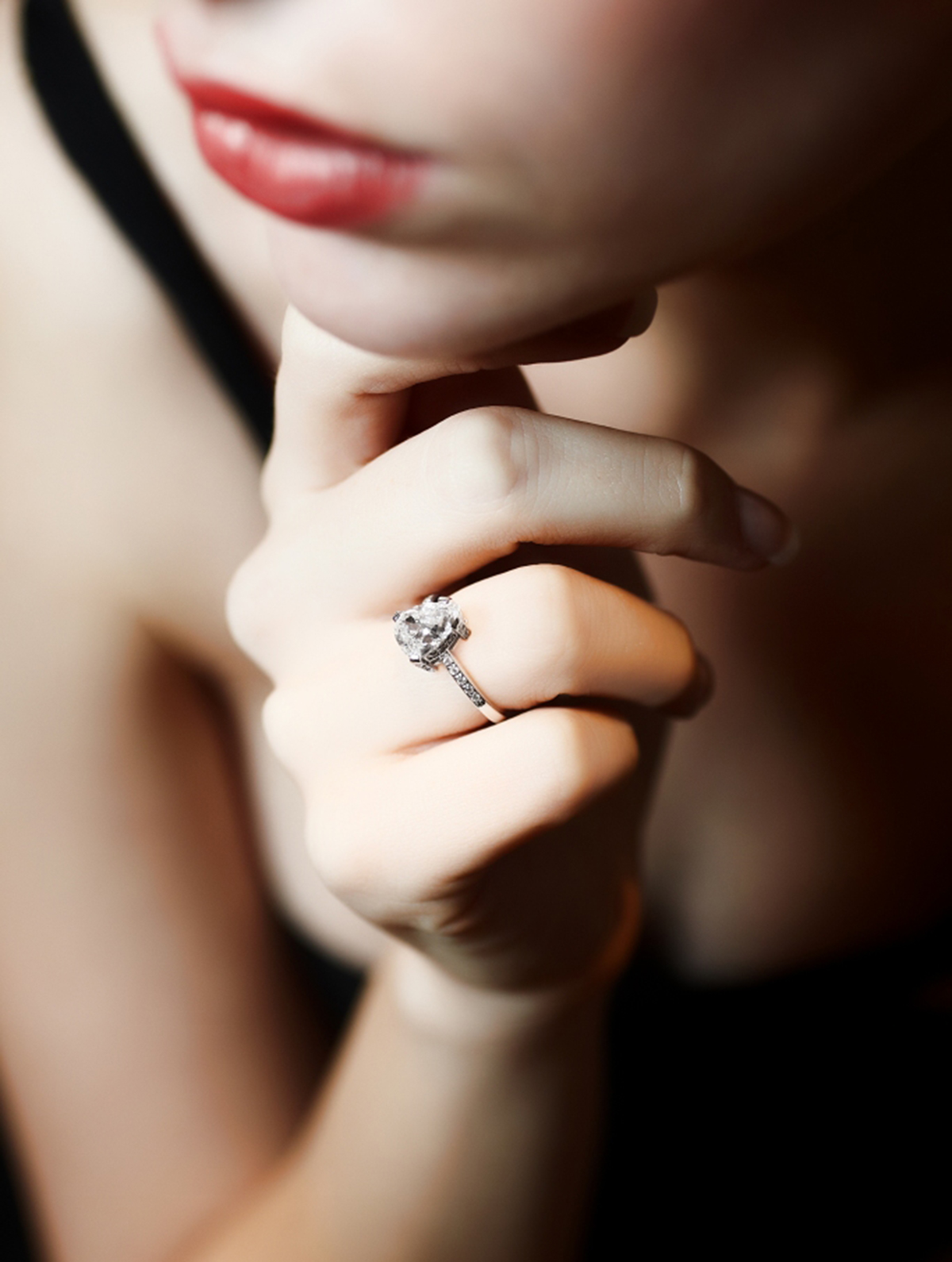
BDI: Filippo William Russo
Tra nome e cognome ci sta incastonato quel William che di italiano ha ben poco – William deriva dal nome di battesimo di mio nonno da parte materna, svizzero. Si occupava di cosmetica, era Amministratore Delegato della Colgate Palmolive, con ufficio a Manhattan, grande appassionato di auto sportive – ci spiega Filippo William Russo, titolare dell’omonima gioielleria situata a due passi da piazza del Duomo, nel cuore di Milano, socio della Borsa Diamanti d’Italia, attratto allo stesso modo dall’agonismo su quattro ruote, ex pilota.

La grande familiarità con i diamanti e l’eccellente competenza in materia (il suo Diploma di Gemmologo fu firmato nel 1996 da Gianmaria Buccellati in persona, all’epoca Presidente IGI) gli derivano dal padre che ad inizio anni ’70 ne avviò una rivendita all’ingrosso senza gemme di colore né oggetti preziosi, destinata a gioiellieri, fabbricanti, designer. Diventò socio della Borsa Diamanti d’Italia, poi tesoriere, quindi fece parte del Consiglio di Amministrazione dell’organismo per ben 5 mandati, mantenendo la doppia carica di tesoriere e segretario del Consiglio.
Entrai in azienda nel 1995 e cominciai subito a guardarmi intorno per allargare gli orizzonti, quindi aerei, viaggi, incontri, fino a quando sono poi riuscito ad agganciarmi, fra gli altri, con grosse ditte israeliane e indiane. Anche mio zio paterno trattava gioielli, aveva una fabbrica con una quindicina di operai e molto lavoro, perché all’epoca di gioielleria italiana se ne vendeva tanta.
Poi cosa è successo?
Il mercato è cambiato. Tra gli anni ’70 e ’90 il gioiello era primo in assoluto nella lista dei desideri di ogni donna, e forse anche degli uomini, mio padre forniva il gioielliere personale di Giorgio Armani, nella Milano da bere degli anni ‘80 si vendevano vagonate di gioielli, nascevano i grossi stilisti che addobbavano come alberi di Natale sia lui che lei. Non solo: durante la prima Repubblica il gioiello era anche considerato come una comoda merce di scambio, ovvero un prezioso in corrispettivo di un favore, non è un segreto per nessuno che migliaia di pezzi di gioielleria importante siano serviti per ammorbidire certe norme su varianti, autostrade, valichi…
Oggi la donna medio borghese ambisce a rifarsi il seno, le labbra, fare passerella alle Maldive, postare sui social un selfie a bordo piscina a Dubai, il gioiello non è più in cima ai suoi desideri. Però rimane roba da conoscitori.
Roba da conoscitori è la tipologia di pezzi che Filippo William Russo propone nel suo atelier, dove si va dai tre zeri a salire, fermandosi poco prima della gioielleria d’altissima gamma, quella che viene spesso battuta da Sotheby’s e dintorni, per intenderci. Diamanti certificati e di recente anche gemme di colore come smeraldi, rubini e zaffiri sono proposti sciolti o anche montati su collane, bracciali, orecchini e, soprattutto, anelli, i preferiti da Filippo William Russo, in un mosaico di preziose vibrazioni che adescano cuore e mente insieme, roba da conoscitori, appunto. Probabilmente non è un segmento tanto di nicchia, perché forse oggi si è disposti a sborsare anche di più per certa gioielleria di rango.

È aumentata la disponibilità economica o si è affinato il gusto?
È un insieme di fattori. La forbice tra ricchi e non ricchi si è allargata ancora di più, pandemia e guerra hanno contribuito parecchio, riportando alla mente di tante persone certe situazioni apocalittiche finora relegate unicamente ai film di fantascienza: se il conflitto si espande in tutta Europa cosa fai? Scappi, e cosa ti porti dietro, la carta di credito? Stacchi il quadro dalla parete? Invece, metti una collana di 200.000 euro al collo di tua moglie e via. Covid e vicende belliche hanno cambiato profondamente il mercato. Il primo ha fatto schizzare in alto le vendite on line, anche quelle di gioielli, in conseguenza del fatto che è diminuita la quantità di merce disponibile e non c’è stata movimentazione delle persone. Oggi chi acquista sul web il cellulare da 1500 euro fa lo stesso anche per un gioiello, un pò come succede già da molto tempo in America, dove la statunitense Blue Nile vende gioielli on line del genere prêt-à-porter non impegnativo. Il mio posizionamento è più alto e quindi non pratico l’e-commerce. Le vicende belliche stanno provocando danni di genere diverso. L’embargo, ad esempio. Appena dopo il Covid il diamante ha ripreso terreno risalendo sette/otto volte il listino Rapaport e ritornando su valori più o meno accettabili, poi è arrivata la guerra e a causa dell’embargo è sparito tutto il grezzo di provenienza russa. ll Gruppo Alrosa (colosso russo di società minerarie specializzate nell’esplorazione, estrazione, produzione e vendita di diamanti, leader mondiale per volume) apportava a livello planetario circa il 45% di approvvigionamento di diamanti su base annua, per cui aver decretato l’embargo alla Russia ha comportato la decurtazione di circa la metà del grezzo circolante. Ne hanno tratto vantaggio i Paesi che orbitano in quell’area, primi fra tutti India e Cina: gli indiani hanno comperato grezzo della Russia, lo hanno tagliato e lo hanno rimesso sul mercato senza dichiararne la provenienza. Tutto ciò ha determinato ancora una volta una crescita dei prezzi e mancanza di merce sul mercato.
Si compra ancora per investimento?
Personalmente ritengo che spendere soldi in un gioiello, in una pietra non possa essere mai ritenuto un investimento, semmai è un discorso di deposito, diciamo di risparmio forzato, per cui io congelo una parte del capitale, lo spendo per l’acquisto di quel bene ma non lo investo in quel bene. Anni dopo mi ritroverò quel certo valore fra le mani ma non avrò avuto possibilità di guadagno, avrò evitato il rischio di sperperare il denaro in maniera diversa. In tutti i casi, il diamante ha subito anche un’inflazione non economica bensì etica della propria immagine, causata dal grosso scandalo dei cosiddetti diamanti da investimento.

Il metaverso, un termine che ultimamente ricorre sempre più spesso. Questa nuova dimensione digitale è stata scoperta anche dagli operatori del comparto orafo, vi organizzano sfilate, presentazioni di prodotto, eventi. Cosa ne pensa?
Ci coglie impreparati, il pubblico deve essere più maturo a livello tecnologico per assorbire determinati concetti e contenuti. Per dire, negli Stati Uniti tanti hanno una Playstation 5 con la maschera della realtà virtuale per immergersi in veri e propri ambienti tridimensionali. Da noi no. In certe zone a malapena arriva Internet. È uno sfoggio d’avanguardia e di modernità che riguarda soprattutto grossi marchi come Damiani, Tiffany, Cartier, Bulgari che presentano il prodotto in modalità ipertecnologica, seguiti da un pubblico di stampa specializzata. Prima di coinvolgere il privato in discorsi del genere, secondo me passerà ancora parecchio tempo, ci arriveremo, ma è un pò presto.
With first and last name is embedded in it that William has very little Italian – William comes from my grandfather’s first name on my mother’s side, Swiss. He worked in cosmetics, was CEO of Colgate Palmolive, with an office in Manhattan, a great sports car enthusiast – explains Filippo William Russo, owner of the eponymous jewelry store located a stone’s throw from Piazza del Duomo, in the heart of Milan, a member of the Diamond Exchange of Italy, similarly attracted to racing on four wheels, a former driver. His great familiarity with diamonds and excellent expertise in the field (his Gemologist Diploma was signed in 1996 by Gianmaria Buccellati himself, then IGI President) comes from his father, who in the early 1970s started a wholesale resale of them without color gems or precious objects, intended for jewelers, manufacturers, designers.
He became a member of the Diamond Exchange of Italy, then treasurer, then served on the body’s board of directors for no less than five terms, holding the dual office of treasurer and board secretary.
I joined the company in 1995 and immediately began looking around to broaden my horizons, so planes, travel, meetings, until I then managed to hook up with, among others, large Israeli and Indian firms. My paternal uncle also dealt in jewelry, he had a factory with about 15 workers and a lot of work, because at that time a lot of Italian jewelry was being sold.
Then what happened?
The market changed. Between the 1970s and 1990s, jewelry was first on every woman’s wish list, and maybe men’s as well, my father supplied Giorgio Armani’s personal jeweler, in the Milan da bere of the 1980s, truckloads of jewelry were sold, big designers were born who decorated both he and she like Christmas trees. Not only that: during the First Republic, jewelry was also regarded as a convenient bargaining chip, that is, a valuable in return for a favor; it is no secret to anyone that thousands of pieces of important jewelry were used to soften certain regulations on variants, highways, passes…
Today, the middle-class woman aspires to get a breast makeover, a lip makeover, catwalk in the Maldives, post a poolside selfie in Dubai on social media; jewelry is no longer at the top of her desires. It remains connoisseur stuff, though.
Connoisseur stuff is the kind of pieces that Filippo William Russo offers in his atelier, where they range from three zeroes and up, stopping just short of the very high-end jewelry, the kind that is often hammered out at Sotheby’s and environs, to be clear. Certified diamonds and recently also colored gems such as emeralds, rubies and sapphires are offered loose or even mounted on necklaces, bracelets, earrings and, above all, rings, Filippo William Russo’s favorites, in a mosaic of precious vibrations that lure heart and mind together, the stuff of connoisseurs, indeed. It’s probably not such a niche segment, because perhaps people are willing to shell out even more today for certain fine jewelry.
Has the affordability increased or has taste been refined?
It is a combination of factors. The gap between rich and not-so-rich has widened even more, pandemic and war have contributed a lot, bringing to the minds of many people certain apocalyptic situations hitherto relegated only to science fiction movies: if the conflict spreads throughout Europe, what do you do? Do you run away, and what do you take with you, your credit card? Do you take the picture off the wall? Instead, you put a 200,000 euro necklace around your wife’s neck and go. Covid and war events have profoundly changed the market. The former made online sales, including jewelry sales, skyrocket as a result of the fact that the amount of available merchandise decreased and there was no movement of people. Today, people who buy a 1,500-euro cell phone on the Web also do the same for a piece of jewelry, somewhat as has been happening for a long time in America, where the U.S.-based Blue Nile sells jewelry online in the non-busy ready-to-wear genre. My positioning is higher and therefore I do not practice e-commerce. The war events are causing different kinds of damage. The embargo, for example. Just after Covid the diamond regained ground going up seven to eight times on the Rapaport list and returning to more or less acceptable values, then the war came and because of the embargo all the Russian-sourced rough disappeared. The Alrosa Group (a Russian giant of mining companies specializing in the exploration, mining, production and sale of diamonds, the world leader in volume) used to bring in about 45 percent of diamond supply on an annual basis at the planetary level, so having decreed the embargo on Russia meant that about half of the circulating rough was cut off. Countries orbiting that area, first and foremost India and China, have benefited: the Indians have bought rough from Russia, cut it up and put it back on the market without declaring its origin. All of this once again resulted in rising prices and lack of goods on the market.
Is it still bought as an investment?
I personally believe that spending money on a piece of jewelry, on a stone can never be considered an investment, if anything it is a matter of deposit, let’s say forced savings, whereby I freeze some of the capital, spend it on the purchase of that asset but do not invest it in that asset. Years later, I will have that certain value in my hands but I will have had no chance for profit, I will have avoided the risk of squandering the money in a different way. In all cases, the diamond has also suffered not economic but ethical inflation of its image, caused by the big scandal of so-called investment diamonds.
The metaverse, a term that has been recurring more and more lately. This new digital dimension has also been discovered by those in the goldsmith industry, they organize fashion shows, product presentations, events there. What do you think about it?
It catches us unprepared, the public needs to be more technologically mature to absorb certain concepts and content. To say, in the United States many people have a Playstation 5 with a virtual reality mask to immerse themselves in real three-dimensional environments. We don’t. In some areas you can barely get Internet. It is a display of avant-garde and modernity that mainly concerns big brands such as Damiani, Tiffany, Cartier, Bulgari who present the product in a hyper-technological mode, followed by an audience of specialized press. Before involving the private sector in such discourse, in my opinion it will be a long time yet, we will get there, but it is a bit early.

POST COMMENT
Devi essere connesso per inviare un commento.